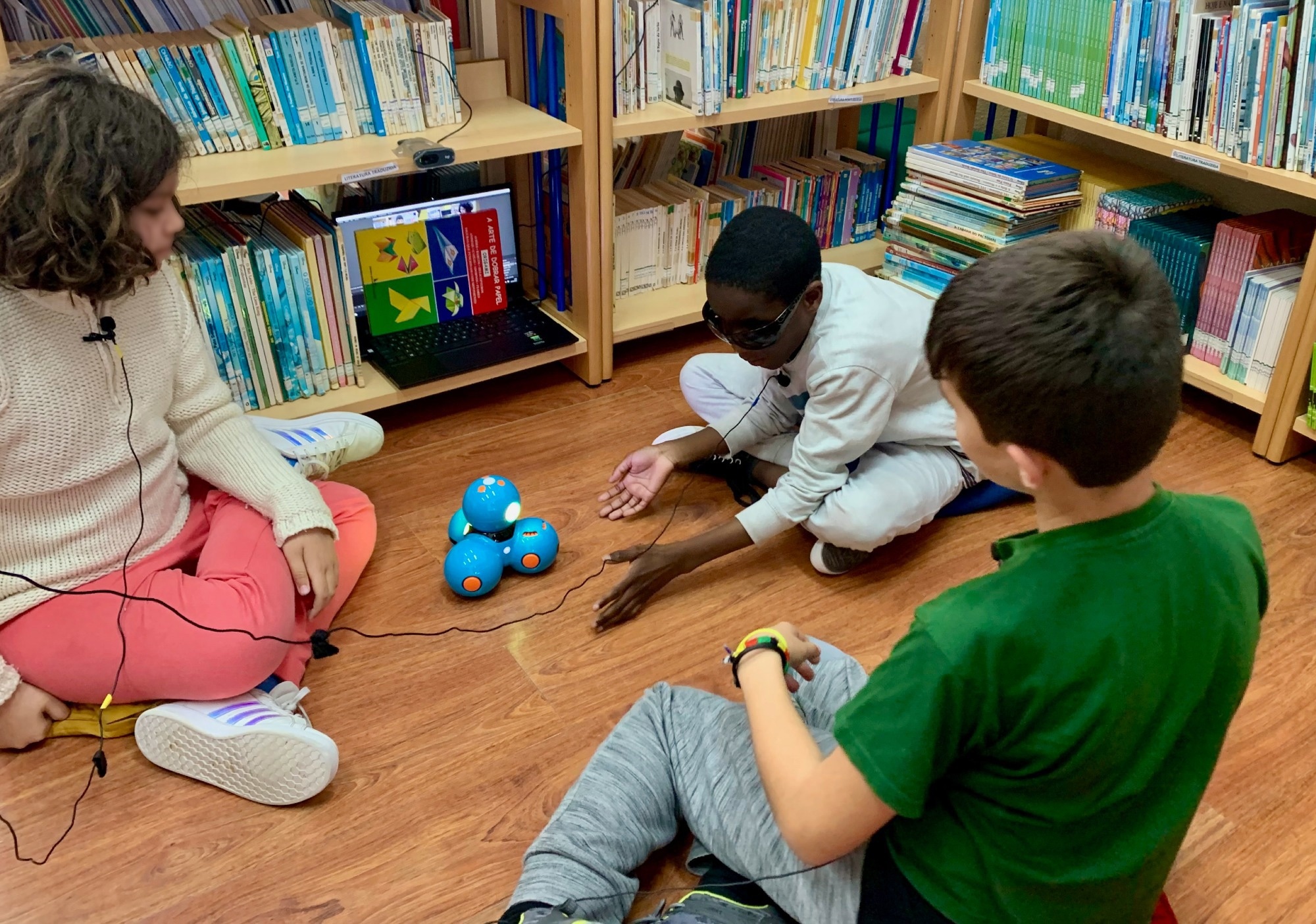Reviewed by Alex SmithMar 31 2023
Children of mixed visual abilities will now be able to have a balanced conversation where everyone takes part equally. This could be made feasible by a new accessibility-focused robot under development.
 Children with mixed visual impairment having a group conversation moderated by the robot Dash. Image Credit: Interactive Technologies Institute.
Children with mixed visual impairment having a group conversation moderated by the robot Dash. Image Credit: Interactive Technologies Institute.
At the Interactive Technologies Institute, a study has been recently released by scientists on making use of a robot to mediate group discussions happening between children with mixed-visual abilities.
The research group presented the study at ACM/IEEE International Conference on Human-Robot Interaction held in Stockholm in March 2023.
The research group found the issue of children with disabilities participating less in group discussions as a result of the lack of accessible technologies that suit the requirements of children with and without visual impairment.
Most accessible technologies are developed to be used only by children with disabilities, which excludes them from many classroom activities. Additionally, children with visual impairment have more challenges perceiving conversation and related non-verbal cues.
Isabel Neto, Leading Researcher and PhD Candidate, Instituto Superior Técnico, Interactive Technologies Institute
For this problem to be resolved, a commercially available robotic toy—Dash—has been developed by scientists. Dash mediates group discussions between mixed-visual abilities children.
The robot moves between the children and remains in front of the presently speaking child as a listening buddy while making use of microphones to comprehend how much each child has spoken.
The position is changed by the robot, and it goes to the child that spoke less in the group to encourage her to interfere. Dash makes use of bright verbal utterances and colorful LEDs to promote participation or communicate conversation engagement.
The robot’s behaviors were created through software development, specifically designed to be used by mixed-abilities children. Its behaviors are perceived by any child, regardless of their visual acuity.
Isabel Neto, Leading Researcher and PhD Candidate, Instituto Superior Técnico, Interactive Technologies Institute
The study was done with groups of children targeted to test if the robot intervention would encourage equal participation of children with and without visual impairment in group conversations.
We were interested in assessing how balanced the group participation would be. We considered a group balanced whenever children spoke fairly for the same amount of time. On the other hand, we considered unbalanced the groups in which at least one child spoke significantly more or less than the others.
Isabel Neto, Leading Researcher and PhD Candidate, Instituto Superior Técnico, Interactive Technologies Institute
The study performed showed that the robot decreased the difference between how much children with and without visual impairments took part. The outcomes were achieved by the team making use of what they called a directive strategy. As far as this case is concerned, the robot moves next to the least participating child, thereby encouraging them to talk.
Neto stated, “Although it did not fully eliminate discrepancies, the robot did reduce this unevenness. For this reason, this is a small yet promising step towards fairer participation of all children in classroom activities.”
This study emphasizes the advantages of making comprehensive technologies that anyone can use, encouraging fair and equitable experiences. In the forthcoming days, the Interactive Technologies Institute research team will perfect the directive plan to make it feel highly organic and natural.
Neto added, “We also want to expand our audiences and explore how we could use a robot on other mixed-ability groups, such as children in the autism spectrum.”
The scientists hope that their findings will positively impact group dynamics in workplaces, classrooms, and homes.
This study led to a collaboration between the Interactive Technologies Institute, Instituto Superior Técnico, INESC-ID, and the Faculty of Sciences of the University of Lisbon.
Journal Reference:
Neto, I., et al. (2023) The Robot Made Us Hear Each Other: Fostering Inclusive Conversations among Mixed-Visual Ability Children. ACM/IEEE International Conference on Human-Robot Interaction. doi.org/10.1145/3568162.3576997.